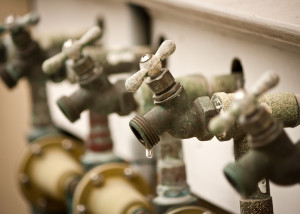Water conservation in California
The situation in California is not quite that bad yet, but some experts are warning that our current dry spell—three years and counting—may be the worst that the region has experienced in the last 500 years. There have been daily items in the news on this situation, as well as urgent calls for action from the governor. Heeding these calls, for water conservation, may become more difficult, however, in the wake of a recent court decision.
Water districts around the state have adopted the use of tiered water rates for residential and small commercial users. These rate structures place financial incentives in the service of reduced usage, rewarding frugal users with lower rates and effectively penalizing heavier residential and light commercial users of this precious resource with higher rates. Recent data show that such rate structures can generate as much as a 15% saving in water usage.
A California court of appeal has ruled
Now, however, a California court of appeal has ruled that one California municipality’s tiered water rate system, adopted in an effort to combat overuse during the state’s ongoing drought, violates the California Constitution. The court held that such tiered rate structures, which set rates that bore no relationship to the actual costs of delivering water, were unconstitutional under Proposition 218, adopted in 1996. Although that initiative was primarily a tax control measure, adopted to restore voter control over municipal tax increases, the California Supreme Court subsequently ruled that the restrictions of Proposition 218 also apply to local water, refuse and sewer charges. As a result, local governments cannot impose higher charges on one group of water, refuse or sewer ratepayers in order to subsidize another group of water, refuse or sewer users. The case is Capistrano Taxpayers Association, Inc. v. City of San Juan Capistrano, No. G048969.
“The practical effect of the court’s decision is to put a straitjacket on local government at a time when maximum flexibility is needed,” Governor Jerry Brown said in a statement, adding that the state’s attorneys were reviewing the ruling.
Court of appeal has rejected the use of tiered water rates
While the court of appeal has rejected the use of tiered water rates that impose financial penalties that do not reflect “cost justification,” based on the requirements of Proposition 218, others contend that a more appropriate pricing method should be based on the marginal cost of water—that is, the price of the very last gallon a water that a community requires. The cost of deeper wells, the development and operation of desalination technology, and the additional use of natural gas to generate electrical power as the availability of hydroelectric power declines (with less river water to use for power generation), should be factored into the “cost” of water being delivered now.
What will the impact of these developments be on California and its economy? In the short term, there will be winners and losers as the rules for urban water use become stricter. Artificial turf and landscape designers/contractors specializing in low or no water use plants will do well. Alternatively, pundits expect that the fashion industry—particularly casual wear makers—will be affected by water availability.
In urban and suburban settings, the most obvious effect will be on home construction. If, hypothetically, the ongoing drought were to result in the imposition of significant new restrictions on homebuilding and other construction, those limitations could negatively affect construction employment, consumption, business expansion, and state and local revenues, according to a recent white paper released by the nonpartisan Legislative Analyst’s Office of the California legislature. For those of us who love the California dream, these consequences are dire, indeed, and require urgent attention.




